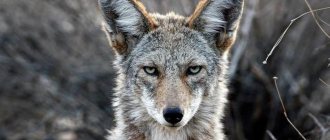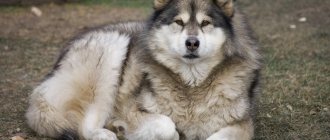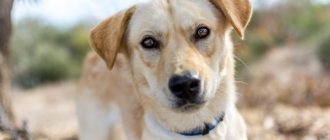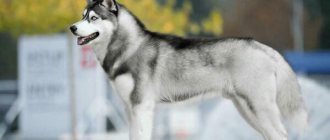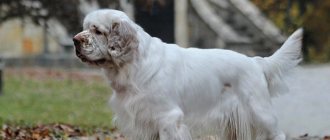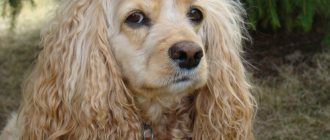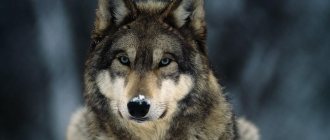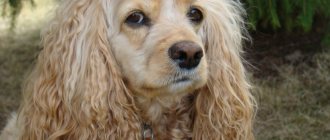- Wild animals
- >>
- Mammals
The red wolf is one of the rarest representatives of predatory mammals. Today it is officially recognized as an endangered species. Belongs to the family of canine predators. Externally, the red wolf differs from a typical predator. It bears a clear resemblance to a red fox, with some features of a jackal. The uniqueness of the predator lies in the amazing natural coloring of its fur.
Origin of the species and description
Photo: Red Wolf
The historical homeland of this representative of the canine family is the territory of modern Central and Southeast Asia. It is a relative of the hyena dog. There is no exact, reliable data on the origin of the predatory mammal. However, there is a hypothesis that the ancient ancestor of the red wolf was the marten. Subsequently, cave dogs evolved from it, which gave birth to new species of predatory animals, including red wolves.
Scientific classification
- Kingdom: Animalia (animals)
- Phylum: Chordata
- Class: Mammalia (mammals)
- Order: Carnivora (predatory)
- Family: Canidae (canids)
- Genus: Cuon (red wolves)
- Species: Cuon alpinus (red wolf)
The genus Cuon is monotypic, meaning it contains only one living species.
Other names: mountain wolf, dhole, Himalayan wolf, Asian wild dog, buanzu
Appearance and features
Photo: Red wolf animal
The body length of a representative of canine predators is slightly more than a meter. Compared to ordinary gray wolves, the body is more elongated and massive. The body weight of an adult is from 12 to 22 kilograms. Males are significantly larger and more massive than females. The red wolf has well-developed, strong muscles, as well as a dense physique. A distinctive feature of the species is the color of its coat. It does not have a pronounced red color, but rather a reddish color with a copper tint. Color may vary slightly depending on age, species and region of habitat.
Video: Red Wolf
To date, 10 subspecies of this representative of canines have been identified. Adult and young wolves have the brightest coat color in the spine area. The area of the abdomen and limbs has a lighter shade of fur. The tip of the tail is always dark, almost black. In the cold season, the coat is thick and tall. In the warm season, it is significantly shorter, stiffer, and the color is richer and darker. The animal's tail is especially beautiful. Its length is about half a meter. He is very fluffy.
The muzzle has an elongated shape, thin, pointed features, and small eyes. At the very top of the head there are large, rounded ears. Unlike other representatives of canine predators, the red wolf has fewer molars - two at the bottom and two at the top. Another distinctive feature of the species is the large number of nipples - six or seven pairs. The limbs also have some features in comparison with other representatives of predatory canine mammals. The middle fingers are connected to each other.
Where does the red wolf live?
Photo: Red wolf in Russia
Today, the predator lives mainly in national parks. It is practically not found in natural conditions. The favorite habitat of a predatory animal in natural conditions is mountain ranges, hilly areas covered with dense vegetation. They thrive in mountainous areas with steep cliffs, caves and gorges. It is practically impossible to find in steppes and lowland deserts.
Within the Russian Federation it is found in very limited quantities. This is mainly the territory of the eastern part of Siberia, the Far East.
The animal lives in a wide variety of areas. These can be coniferous forests, the foothills of mountain peaks with endless meadows, cedar thickets, etc. The main condition for the full functioning of the red wolf is a small layer of snow cover. Thick layers of snow and deep snowdrifts make it difficult for the animal to live and force it to look for other habitats. Red wolves do not remain sedentary in one region. They tend to move long distances in search of food and explore new areas.
The main geographical areas of habitat of the endangered species:
- Central Asia;
- South Asia;
- Mongolia;
- Tibet;
- China;
- Sumatra Island;
- Java Island;
- India;
- Indonesia;
- Zone of Siberia and the Far East of Russia.
It is extremely rare and inconsistent on the territory of the Russian Federation. Also in single quantities in Vietnam and Kazakhstan. According to scientists, no more than 2000-3000 individuals live in the natural environment.
Habitat
The Himalayan wolf prefers open spaces and is found at altitudes of more than 3000 meters above sea level. The range of their hunting grounds covers an area of up to 40 square meters. km. Another Buanzu is found in the forest-steppe and dense jungles of the plain, as well as on the hills. They have never been seen on open plains or deserts.
What does the red wolf eat?
Photo: Red wolf from the Red Book
The red wolf is a predatory animal. The basis of the diet is the meat of ungulates. These animals are considered excellent hunters. They gather in packs and hunt together.
Who is the red wolf's prey?
- small animals - rodents, mice, lizards;
- hares;
- marmots;
- raccoons;
- large ungulates - roe deer, deer, mountain goats;
- wild boars.
In addition to animal food, predators can feed on some types of vegetation. Predators go hunting mainly during daylight hours in packs. A highly developed sense of smell helps determine the location of the victim. In search of prey, predators constantly recheck their senses. They jump upward, catching the smell with their nose and adjusting their trajectory.
During the hunt, all members of the pack act quickly, harmoniously and very clearly. It is not typical for them to grab the victim by the throat. They attack from behind.
All individuals of the flock disperse in a line and drive their prey into the open area. They then gradually surround her, rapidly reducing her chances of survival. They can often drive the victim into a body of water, if there is one nearby. If a wolf hunts small prey, for example, a bird or rodents, the animals do not always concentrate in packs. They can hunt alone.
Red wolves are known as bloodthirsty and very cruel predators. They eat their prey without waiting for it to die. The art of skillfully hunting and acting quickly and in an organized manner allows you to hunt even particularly large-sized ungulates, for example, buffalo, elk, etc.
Another feature of representatives of the canine family is endurance. They are not endowed with the ability to run fast, but their enormous endurance and patience allow them to pursue prey until it finally loses strength. Predators are able to travel long distances in search of food. They are capable of moving from place to place, going hundreds of kilometers.
Behavior
Red wolf - interesting facts about behavior. These wolves never attack a person; on the contrary, they try to avoid him and his home. They are very careful and sensitive animals, and the red wolf also runs very fast. While hunting, it can reach speeds of up to 60 kilometers per hour. The length of the predatory athlete's jump is about 6 meters. Once, in one of the zoos, a wolf was able to overcome the fence of an enclosure more than two meters high. Then he escaped to freedom by jumping over a six-meter ditch.
iv>
Red wolves hunt with their entire large and friendly pack. Since they are very fast and resilient, they can track and pursue prey for a long time. When hunting, they make whistling, clicking sounds, and also a sound similar to a howl. In this way they try to scare the prey and give signs to their fellow tribesmen.
Their diet includes both small artiodactyls - wild goats, deer, antelopes, and some large herbivores, for example a bull or bison. Sometimes even a huge tiger cannot withstand the onslaught of a large flock. Attacking him from all sides at the same time, they exhaust the predatory cat. They do not hesitate to feast on voles and other steppe rodents. These animals are very voracious. A hungry predator of this species can devour a whole fawn weighing up to 10 kilograms in one sitting, which is about half the weight of the animal itself.
Features of character and lifestyle
Photo: Red Wolf
The lifestyle, character and habits of this species have been studied to the least extent compared to other representatives of this species. It is well established that red wolves are not solitary animals. They gather in packs, hunt together and raise their young. Representatives of one group are members of a family. Basically, the size of the flock is 6-12 adult individuals. Most often, one flock contains no more than two dozen representatives of predators.
I can go hunting both in the dark and during daylight hours. All mature individuals of the flock participate in the process of obtaining food. The radius of the territory where predators hunt does not exceed 45 square kilometers. Predators have several strategies that they use when hunting. They can attract ungulates with certain sounds, and, lining up in a line, chase it.
Another strategy is the distribution of roles. Some members of the flock pursue the prey, while others intercept it during the chase. Wolves eat the prey they catch together. After eating, they immediately look for a source of water to quench their thirst.
Characteristic
The red wolf received its nickname due to its similarity with foxes and jackals according to the following criteria:
- Red, and in some cases bright red, fur. If you catch a glimpse of this animal, then you can quite say that it was a fox, but certainly not the gray wolf we are used to;
- A fluffy tail, uncharacteristic of ordinary Seromans, which is very long and almost reaches the ground (tail length 45-50 cm);
- Narrow and slightly elongated muzzle;
- Large and rounded ears that resemble the outline of a jackal.
Captive red wolf
These mammals create very strong and friendly families, in which a certain hierarchy reigns. People have a lot to learn from wolves, because couples that are created to form a future family remain so until the end of their days.
This is interesting! There is a mention of red wolves in the world-famous work “The Jungle Book”. Even though this is a fairy tale, it describes the most basic and true characteristics of a mammal. Remember the passages from the book: “Predators moved in packs of up to thirty individuals.” This is true, but in real life they move in packs of up to 10-12 members. This is due to the fact that the population is subject to extinction and more numbers are not recruited within one family. The group size can reach up to 30 if several families unite.
Social structure and reproduction
Photo: Red wolf cub
Red wolves are known for their constancy and devotion to their family. They form families in which they exist throughout their lives. The male and female jointly raise and feed their offspring. Capable of producing offspring all year round. However, according to statistics, puppies are born most often in winter or early spring. After entering into mating relations, the she-wolf bears her cubs for about two months.
Before they are born, she prepares the den. Puppies are born helpless, blind, in numbers of 5-8. In appearance they are very reminiscent of baby German Shepherds. 10-14 days after birth, babies begin to see. They grow and get stronger quite quickly. 1.5-2 months after birth, wolf cubs begin to bark. Around the same period, the she-wolf begins to feed her offspring with the remains of meat food, which she regurgitates after eating.
During the period of offspring growth, the flock does not go far from the den, even during the hunt. At the age of three months, babies move into open space outside the den for the first time. Young individuals very quickly master the way of life and adopt the habits of adult family members. However, adult wolves protect them for a long time. Upon reaching seven or eight months of age, young animals are allowed to participate in hunting. By about a year, the offspring reaches sexual maturity.
Males, along with females, are involved in raising wolf cubs. They are known as caring and very sensitive fathers. They protect the puppies. They play with them. The average lifespan of a red wolf in natural conditions is 7-10 years. In captivity, life expectancy increases to 15-17 years.
Lifestyle
Due to the fact that the population of these animals has been reduced, the features of their life activity, with regard to reproduction, have not been well studied. It has been reliably established that the red mountain wolf is monogamous; males take a fairly active part in raising their offspring. If we consider the life cycle of the Himalayan wolf in captivity, then the active breeding season occurs in winter. The female's pregnancy lasts approximately 60 days, and one litter can have up to 9 puppies. Newborns are very similar in appearance to a German Shepherd, and after about 2 weeks their eyes open. By the age of six months, the cubs are almost the same in size and appearance as adult wolves. It should be noted that in India, puppies are born throughout the year, which, in fact, is quite logical, since the climate there is warm.
Researchers in this field note that if measures are not taken to prevent the death of this breed, it may soon disappear altogether.
Source: ECOportal.info
Natural enemies of the red wolf
Photo: Red wolf animal
Natural enemies that led to the extinction of the species are relatives of predators, another representatives of the canine family - gray wolves, coyotes. They attacked red wolves for competition purposes, defending their territory and the right to hunt. Gray wolves are superior to red wolves in size, strength, and numbers. In the animal world, the enemies of the red wolf are also considered to be the snow leopard and the lynx. They also tend to kill the beast to avoid competition.
Another dangerous enemy of the red wolf, which contributed to its extermination, is man and his activities. In many countries, people perceived a representative of the canine family as a competitor and simply hunted it down. The hunt for the beast was carried out on a large scale. Of particular value was the skin and fur of the animal, as well as meat. The destruction by humans of the habitat of predatory animals and the development of increasingly untouched natural spaces has led to the death of animals. Shooting of the food source - ungulates living in forests - is also the reason for the extinction of the species.
Another reason for the mass death of animals is diseases such as plague and rabies. These diseases progress very quickly and are transmitted to other healthy individuals, causing mass death.
Population and species status
Photo: Red wolf in Russia
Today, the red wolf is officially recognized as an endangered species. On the territory of the Russian Federation it has been practically destroyed. The bulk of representatives of the canine predator family is concentrated in India.
In this country, hunting animals is even allowed with the purchase of a license. In total, ten subspecies of the red wolf have been identified. Two out of ten are almost completely destroyed - East Asian and West Asian. Kashmir, Lhasa, Kumaon, Nepal, Bhutan are also extremely rare.
Today, no more than 2.5-3 thousand individuals live in natural conditions. The bulk of them are concentrated in India and Mongolia.
